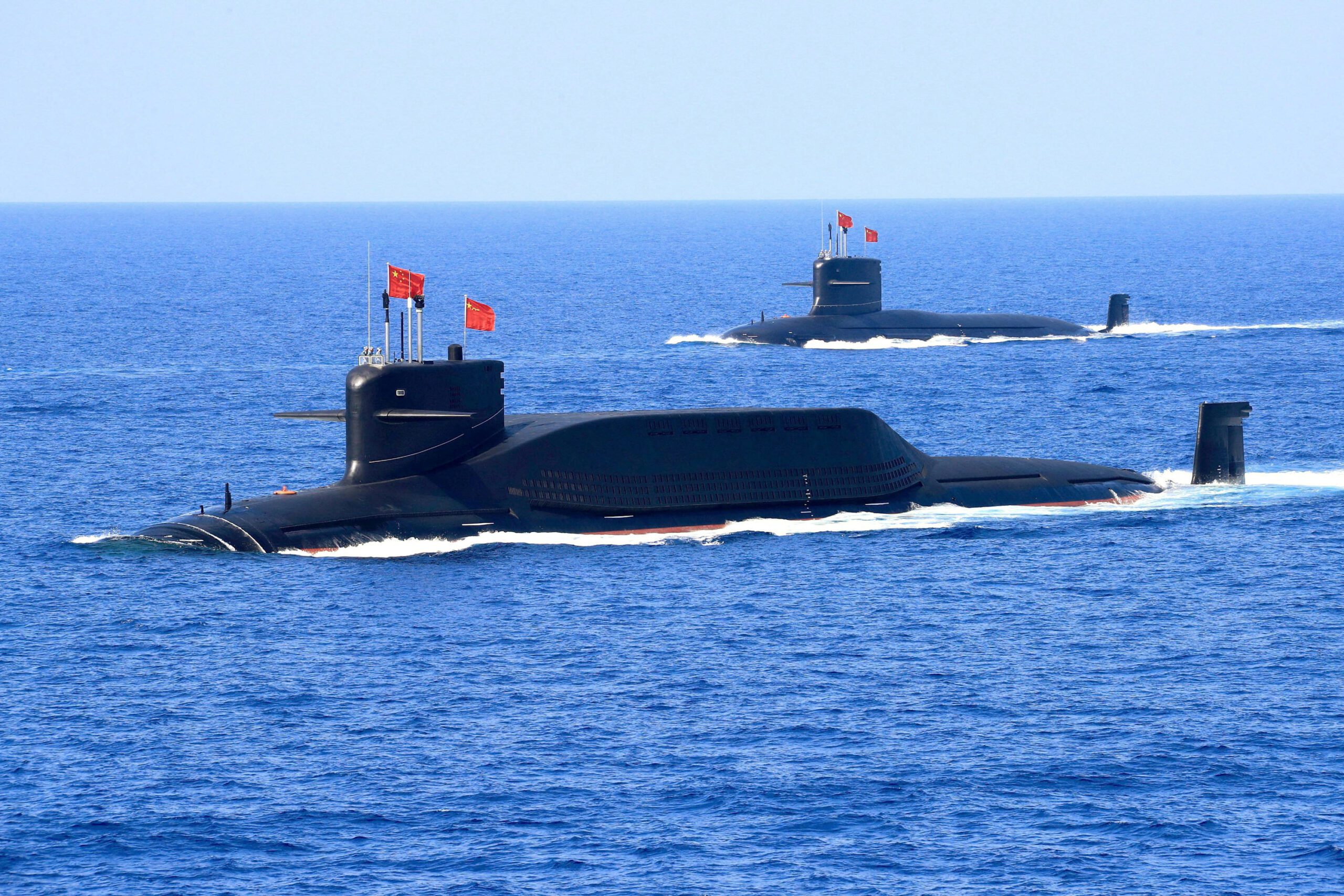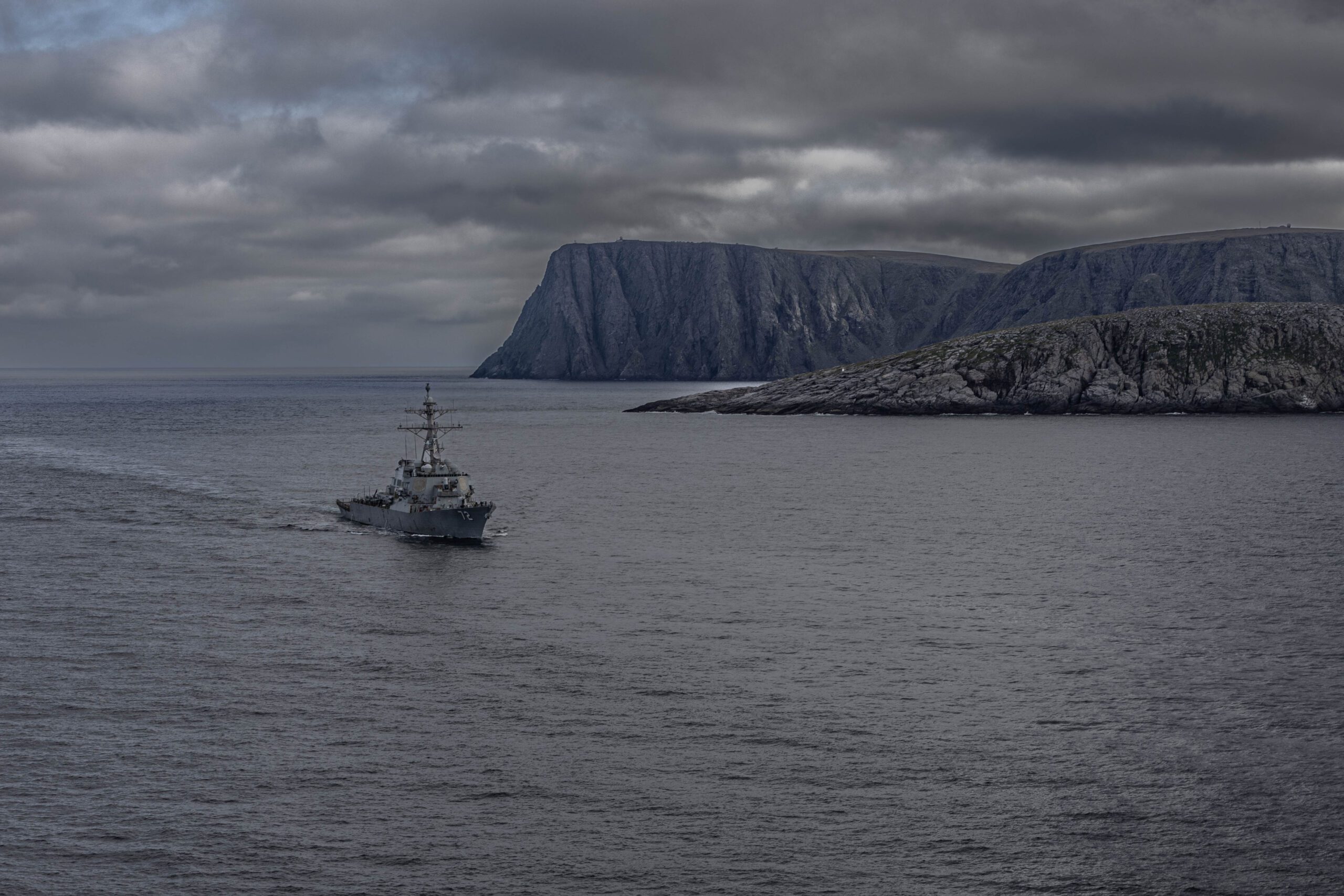By Greg Torode (Reuters) China is for the first time keeping at least one nuclear-armed ballistic missile submarine constantly at sea, according to a Pentagon report – adding pressure on the United States and its allies as they try to counter Beijing’s growing military.
The assessment of China’s military said China’s fleet of six Jin-class ballistic missile submarines were operating “near-continuous” patrols from Hainan Island into the South China Sea. Equipped with a new, longer-range ballistic missile, they can hit the continental United States, analysts say.
The note in the 174-page report drew little attention when it was released in late November, but shows crucial improvements in Chinese capabilities, according to four regional military attaches familiar with naval operations and five other security analysts.
Even as the AUKUS deal will see Australia field its first nuclear-powered submarines over the next two decades, the constant Chinese ballistic missile patrols at sea pile strain on the resources of the United States and its allies as they intensify Cold War-style deployments.
“We’re going to want to have our SSNs trying to tail them… so the extra demands on our assets are clear,” said Christopher Twomey, a security scholar at the U.S. Naval Postgraduate School in California, speaking in a private capacity. SSN is a U.S. designation for a nuclear-powered attack sub. “But the point here is that the information – the near continuous patrols – has changed so rapidly that we don’t know what else has changed.”
The new patrols imply improvements in many areas, including logistics, command and control, and weapons. They also show how China starting to operate its ballistic missile submarines in much the same way the United States, Russia, Britain and France have for decades, military attaches, former submariners and security analysts say.
Their “deterrence patrols” allow them to threaten a nuclear counterattack even if land-based missiles and systems are destroyed. Under classic nuclear doctrine, that deters an adversary from launching an initial strike.
The Chinese subs are now being equipped with a third-generation missile, the JL-3, General Anthony Cotton, the commander of the U.S. Strategic Command, told a congressional hearing in March.
With an estimated range of more than 10,000 kilometers (6,214 miles) and carrying multiple warheads, the JL-3 allows China to reach the continental United States from Chinese coastal waters for the first time, the Pentagon report notes.
Previous reports had said the JL-3 was not expected to be deployed until China launched its next-generation Type-096 submarines in coming years.
The Chinese defense ministry did not respond to a request for comment on the Pentagon report and its submarine deployments. The Pentagon did not comment on its earlier assessments or whether the Chinese deployments posed an operational challenge.
The U.S. Navy keeps about two dozen nuclear-powered attack subs based across the Pacific, including in Guam and Hawaii, according to the Pacific Fleet. Under AUKUS, U.S. and British nuclear-powered subs will be deployed out of Western Australia from 2027.
Such submarines are the core weapons for hunting ballistic missile subs, backed by surface ships and P-8 Poseidon surveillance aircraft. The U.S. also has seabed sensors in key sea lanes to help detect submarines.
Timothy Wright, a defense analyst at London’s International Institute for Strategic Studies, said U.S. forces could probably cope with the situation now, but would have to commit more assets in the next 10 to 15 years once the stealthier Type-096 patrols begin.
China’s rapid expansion of its nuclear forces mean U.S. strategists must contend with two “nuclear peer adversaries” for the first time, along with Russia, he added.
“That will be of concern to the United States because it will stretch U.S. defenses, hold more targets at risk, and they will need addressing with additional conventional and nuclear capabilities,” he said.
COMMAND AUTHORITY
China’s navy has for years been thought to have the capability for deterrence patrols, but issues with command, control and communications have slowed their deployment, the military attaches and analysts say. Communications are crucial and complex for ballistic missile subs, which must remain hidden as part of their mission.
The Jin-class subs, expected to be replaced by the Type-096 over the next decade, are relatively noisy and easy to track, the military attaches said.
“Something concerning command authority must have also changed, but we just don’t have very good opportunities to talk to the Chinese about this kind of stuff,” Twomey said.
The Chinese military has emphasized that the Central Military Commission, headed by President Xi Jinping, is the only nuclear command authority.
Hans Kristensen, director of the nuclear information project at the Federation of American Scientists, said he believed command and communications issues remained a “work in progress.”
“While China probably has made progress on establishing secure and operationally meaningful command and control between the Central Military Commission and the SSBNs, it seems unlikely that the capability is complete or necessarily fully battle hardened,” he said, using the designation letters for a nuclear-powered ballistic missile submarine.
Two researchers at a Chinese navy training institute in Nanjing warned in a 2019 underwater-warfare journal of poor command organization and co-ordination among submarine forces. The paper also urged improvements in submarine-launched nuclear strike capability.
The navy must “strengthen ballistic missile nuclear submarines on patrol at sea, so as to ensure that they have the means and capabilities to carry out secondary nuclear counterattack operations when necessary,” the researchers wrote.
SOUTH CHINA SEA ‘BASTION’
With the advent of the JL-3 missile, Kristensen and other analysts expect Chinese strategists to keep their ballistic missile subs in the deep waters of the South China Sea – which China has fortified with a string of bases – rather than risk patrols in the Western Pacific.
Collin Koh, a security fellow at Singapore’s S. Rajaratnam School of International Studies, said China could keep its ballistic missile submarines in a “bastion” of protected waters near its shores.
“If I was the planner, I would want to keep my strategic deterrence assets as close to me as possible, and the South China Sea is perfect for that,” Koh said.
Russia is thought to keep most of its 11 ballistic missile submarines largely in bastions off its Arctic coasts, while U.S., French and British boats roam more widely, three analysts said.
Kristensen said the more numerous Chinese submarine deployments have meant the PLA and U.S. militaries increasingly “rub up” against each other – increasing the odds of accidental conflict.
“The Americans of course are trying to poke into that bastion and see what they can do, and what they need to do, so that is where the tension can build and incidents happen,” he said.
(Reporting By Greg Torode in Hong Kong and Eduardo Baptista in Beijing; Additional reporting by Idrees Ali in Washington; Editing by Gerry Doyle., Reuters)

 Join The Club
Join The Club











